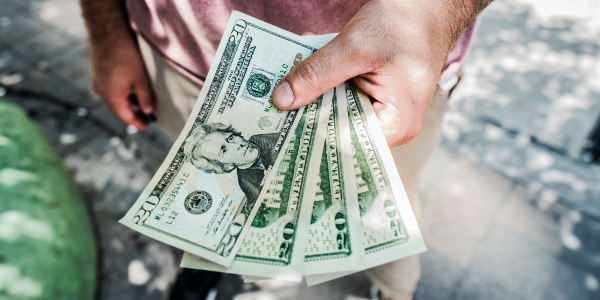Home /
Money Blog
Selling Notes for Improved Returns
Note: You can use any financial calculator to do this problem, but if you want the BEST, you can
get our
10bii
Financial Calculator for iOS, Android, Mac, and Windows!
 Image Source
Image Source
THE SCENARIO
If you own a note, it might be possible to sell it rather than continue collecting payments, and get an even better return than you otherwise would have.
For example, let's say that I buy a fully-amortizing note for $79,000 with an unpaid balance of $100,000, a payment of $898.83, and remaining term of 15 years. I collect payments for 3 years, then sell the note to Brenda, who wants to make 8% on her money.
The question: What is my overall return on my $79,000 initial investment?
THE SOLUTION
This one has a couple of parts.
- Find out how much Brenda is willing to pay for the last 12 years of the note.
- Find out my return on my investment over the 3 years I owned the note
Note: It may be tempting to try and figure out things like the interest rate the borrower is paying, the amount the borrower owes after 3 years, or other things like that. You can do so (and Brenda should do so as part of her due diligence when deciding whether or not she wants to buy it), but it's not necessary when determining my return. The information in the setup that the borrower owes $100,000 is extraneous to the question being asked.
First things first, make sure the calculator is using 12 Payments per Year.
Step 1: Find out what Brenda will pay for the last 12 years
N: 144 (Brenda's buying 12 years, or 12 x 12 = 144 payments)
I/YR: 8 (Brenda wants to get an 8% return on her money)
PV: (This is what I'm trying to find)
PMT: 898.83 (Brenda will receive the $898.83 monthly note payment each month)
FV: 0 (The note amortizes fully)
Brenda will pay $83,036.43 for the note.
Step 2: Find out what my ROI was for the 3 years I owned the note
N: 36 (I owned the note for 3 years, which is 3 x 12 = 36 months)
I/YR: (This is what I'm trying to find)
PV: -79,000 (I paid $79,000 for the note originally)
PMT: 898.83 (For the 3 years I owned the note, I received payments of $898.83)
FV: 83,036.43 (This is the amount Brenda pays me for the note, determined in Part 1)
My return on my $79,000 is 15.01%.
If you were curious, you could do the math and determine that if I'd kept the note for all 15 years, my return on my $79,000 would have been 11.02% - that was my goal when I bought the note. However, since Brenda needs a lower return than I want, she's willing to pay more for the note. This means that I can enhance my return by using the relative premium she'll pay for the note.
If you want to understand the relationship between desired return and purchase price more, I'd encourage you to play around with your calculator and run some scenarios on your own - be curious!
Can you think of any reason not to sell the last 12 years of note payments to Brenda? Do you think I'm taking advantage of her by selling it to her for more than I'd be willing to buy it for? Why or why not? Let us know in the comments!
 Image Source
Image Source